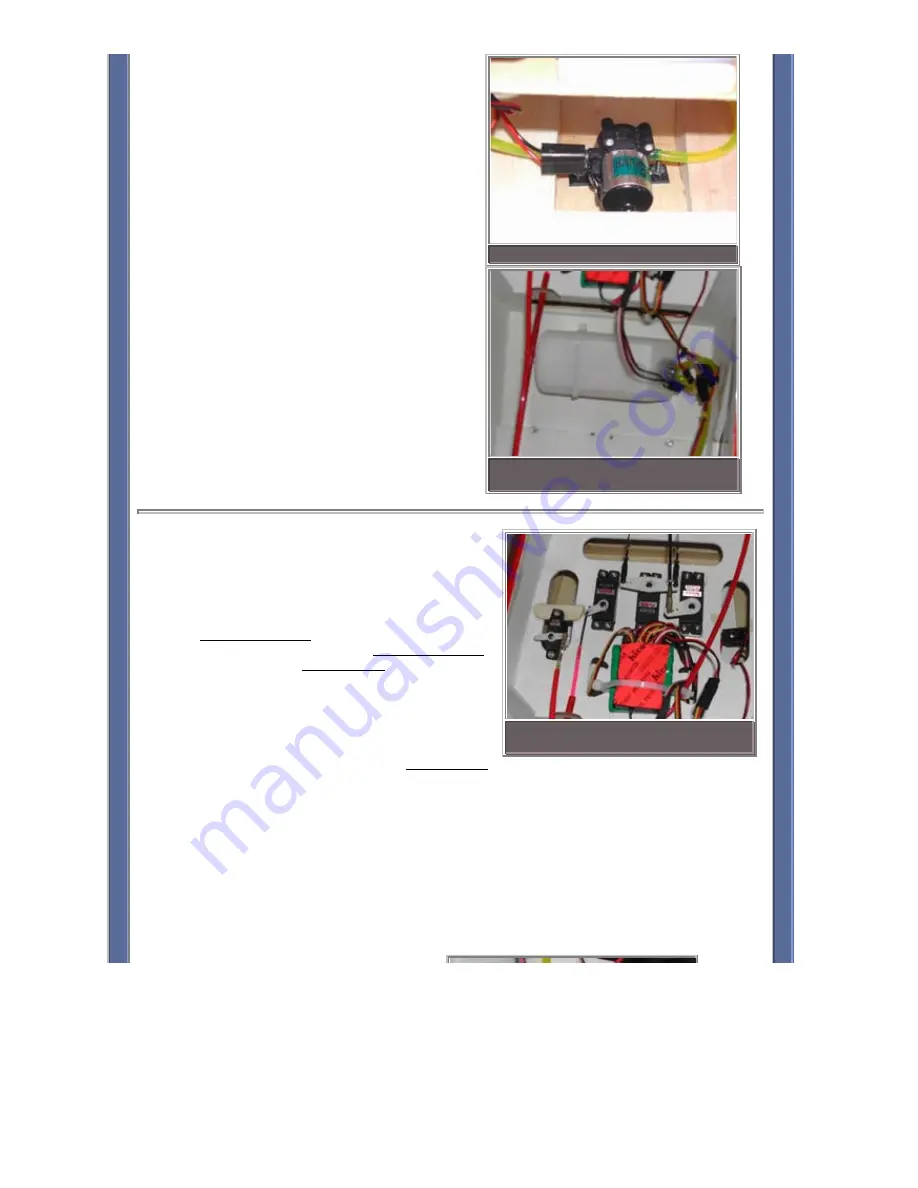
vent/overflow line exits through a hole in the fuselage
floor.
The output side of the smoke pump is connected to the
muffler. I had to drill and tap the muffler for a feed
nipple. I located it as close to the engine as I could. I
had to use a special high heat fuel line for this
connection.
SMOKE PUMP INSTALLED
SMOKE TANK INSTALLED ON THE
CG
RADIO/SERVO INSTALLATION:
Up to this point the
aileron servos are already installed as are the control
horns on all the tail surfaces. The throttle, elevator,
rudder, and throttle kill servos are left.
The Taylorcraft has a nice plywood servo tray with plenty
of room for standard size servos to be installed. I decided
to install a
Hitec HS-605BB
high torque servo for the
rudder and elevator. I used a standard
Hitec HS-425BB
servo for the throttle and a
Hitec HS-81
mini servo for
the throttle kill.
It is necessary to install 2 plywood spacers under the
elevator servo to raise it high enough for proper
clearance with the rudder's pull-pull cables. The throttle
and rudder servos are installed in tray next. It was
necessary to make a small plywood rail for the
Hitec HS-81
throttle kill servo. I installed it in the opening next to the
throttle servo.
RUDDER, THROTTLE, THROTTLE
KILL, AND ELEVATOR SERVOS
Next, I assembled the elevator pushrod as instructed in the manual. It consists of a hardwood square
rod with a single pushrod installed on one end and 2 pushrods forming a "Y" a the other end. You
will need to predrill holes to accept the pushrod on either end of the hardwood rod. When I assemble
these types of pushrods I always wrap the wood/wire connection with sewing thread and then coat it
with thin CA. Doing this will ensure a trouble free connection. I used two plastic pushrod tubes to aid
in getting the elevator pushrod through the fuselage. I slid the tubes though the slots on either side of
the rear fuselage and into the cabin. I then slide each wire from the "Y" into a tube. As I push the rod
through the fuse, I pull on the rods. This process keeps the rods from hanging up on the formers
inside the fuselage.


































